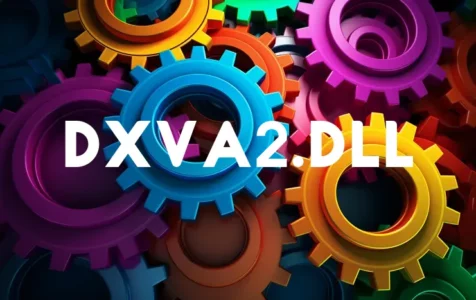Introduction to DXVA2.DLL
DXVA2.DLL stands for DirectX Video Acceleration 2.0 DLL. It is a system file associated with the MicrosoftВ® WindowsВ® Operating System designed to facilitate video playback performance on Windows by offloading video processing tasks to the GPU (graphics processing unit). This file is critical for users who want to experience high-quality video rendering and is especially vital for applications and games that require hardware-accelerated video decoding.
Is DXVA2.DLL Safe to Run?
Yes, DXVA2.DLL is a legitimate system file created by Microsoft. However, just like any other system file, its safety depends on whether the file is genuinely from the manufacturer. If the DXVA2.DLL on your system was included with your Windows installation or through an update from Microsoft, it should be safe to run.
Could It Be a Virus or Malware?
Although the original DXVA2.DLL file provided by Microsoft is not a virus or malware, cybercriminals can disguise malicious software with the same name. This deceit aims to trick users into thinking they are dealing with a safe system file. Therefore, it is crucial to ensure that the DXVA2.DLL file on your computer is located in the correct folder, typically within the System32 directory, and has a digital signature from Microsoft. It’s good practice to run a scan with updated antivirus software to check the legitimacy of your system files.
Common Issues Associated with DXVA2.DLL
Errors related to DXVA2.DLL can arise due to several reasons, including:
Expert Tip: For smoother PC performance, consider using a PC optimization tool. It handles junk files, incorrect settings, and harmful apps. Make sure it's right for your system, and always check the EULA and Privacy Policy.
Special offer. About Outbyte, uninstall instructions, EULA, Privacy Policy.
– A faulty application installation or update that causes the DLL to go missing or get corrupted.
– Malicious software that has infected the system and damaged system files, including DXVA2.DLL.
– A damaged or corrupt Windows registry, which can occur after modifying software or hardware installations without proper updates to the system.
– The file being accidentally deleted or moved from its required location.
These issues might present themselves via error messages such as “dxva2.dll is missing,” “dxva2.dll not found,” or “the code execution cannot proceed because dxva2.dll was not found.”
How to Fix Issues With DXVA2.DLL
If you encounter problems with the DXVA2.DLL file, several methods can help restore or correct these issues.
Before attempting any fixes, back up your system to avoid accidental data loss. Methods to fix DXVA2.DLL errors include:
1. Restore the file from the Recycle Bin if you accidentally deleted it.
2. Run a full system scan for malware and viruses using a reliable antivirus program.
3. Use Windows System File Checker, a utility that allows users to scan for and restore corruptions in Windows system files. You can run this tool from the Command Prompt (Admin) by typing “sfc /scannow”.
4. Reinstall the program that’s reporting the DXVA2.DLL error. If the error occurs when opening a specific application, reinstalling it could replace the missing or corrupted file.
5. Manually download a new copy of the DXVA2.DLL file from a trusted source and replace the problematic one. This should be done with caution as downloading system files from unofficial websites can pose a security risk.
6. Perform a system restore to revert your computer’s system files and programs to a time when everything was working correctly.
For an automated resolution, there are tools available online that offer to fix missing or corrupted DLL files. These tools often scan your system’s DLLs and offer to replace or repair them as needed. Note to always choose reputable software providers and ensure the tool is compatible with your system.
User Experiences and Community Discussions
In community discussions, users often express frustration when they face DLL errors as it hampers their ability to run software applications or games smoothly. Some report success in resolving these issues through reinstallation of software or Windows updates that restore the system files. Others find solutions via system restore points or using dedicated DLL fixing utilities. When seeking help, joining forums like discussions.apple.com or tech support platforms allows users to share experiences and get responses from both tech experts and knowledgeable community members.
For direct access to solutions provided by users who faced similar problems, consider visiting tech support forums or the Microsoft community page. You can often find step-by-step guidance or valuable tips from users who have successfully resolved the issue. It’s also a good opportunity to ask your specific questions and receive personalized support.
Conclusion
DXVA2.DLL plays a critical role in video processing on Windows systems. While it is generally safe to run, issues can arise due to various reasons including system updates, software bugs, or malware infections. By following the recommended troubleshooting steps or using a combination of automatic repair tools and forums, users can often resolve these DXVA2.DLL related issues and get their systems back to optimal performance.
